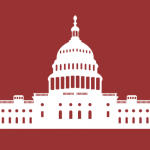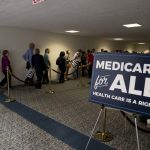More than 300 health providers in Pittsburgh have, in total, received at least $139 million so far in federal funding to help cover losses related to the COVID-19 pandemic, more than any other Pennsylvania city and among the top recipients of funding nationwide, according to recently published federal data.
Yet gaps in how the funding is distributed continue to spark disagreement in Washington — including how much will be sent to behavioral health clinics, home health care, children’s health providers and other Medicaid-focused providers.
Congress has authorized $175 billion to create the Provider Relief Fund, one of several large spending programs quickly established to aid struggling families and businesses amid COVID-19’s spread.
The virus prompted many states, including Pennsylvania, to require hospitals and health providers to put off nonessential services and maintain adequate space and resources to manage any surge in COVID-19 cases.
Want to publish your own articles on DistilINFO Publications?
Send us an email, we will get in touch with you.
The new data, published by the U.S. Department of Health and Human Services, details the initial chunk of that fund totaling some $25 billion to providers nationwide.
In Pittsburgh, a Post-Gazette analysis of the data showed, some of the largest health institutions received the most money.
UPMC’s Presbyterian and Shadyside hospitals shared the biggest individual allotment, receiving nearly $39 million, followed by three Allegheny Health Network hospitals sharing about $35 million.
Federal grants to AHN so far included about $22 million for Allegheny General Hospital on the North Side, $8 million for West Penn Hospital in Bloomfield and $6 million for Forbes Hospital in Monroeville, according to Dan Laurent, an AHN spokesman.
While the federal aid has offset some losses, “They have reimbursed a small portion of the overall losses that most providers have incurred,” Mr. Laurent said.
UPMC did not respond to a request for comment.
An HHS spokesperson cautioned that the department’s database is not comprehensive, showing only funds that providers have confirmed receiving. That means the data can lag by weeks and understate the total dollars issued by the department, the spokesperson said.
The database is the first and most detailed look at the health funding at a time providers are dealing with red ink and the Trump administration’s method for doling out badly needed aid has come under scrutiny.
The data show money that was given out last month based on a provider’s 2019 Medicare fee-for-service reimbursements and 2018 net patient revenue. The department explained that Medicare reimbursement allowed it to speed up delivery of the aid.
“This simple formula used the data on hand to get the money out the door as quickly as possible,” the department explained in online materials.
Congressional Democrats have argued the distribution method discriminates against health care providers like frontline hospitals, nursing homes, home health care providers, pediatricians and behavioral health clinics.
That’s because the department has not released guidelines on how it intends to help providers who rely on Medicaid, the state-administered health program that serves low-income patients.
Last week, Rep. Frank Pallone Jr., D-N.J., chair of the House Energy and Commerce Committee, and Ron Wyden, D-Oregon, the top Democrat on the Senate Finance Committee, pressed the Trump administration for details.
“HHS’s continued neglect for the needs of Medicaid-dependent providers struggling to deal with the COVID-19 crisis is unacceptable,” the lawmakers wrote to Health and Human Services Secretary Alex Azar.
“The Medicaid program is a first responder, and the providers it relies on must be treated with equity,” they wrote. “At a bare minimum, that should include expeditious access to the [provider fund] as intended by Congress.”
In 2018, Medicaid provided health coverage for 97 million low-income Americans over the course of the year, according to Congressional Budget Office estimates. In any given month, Medicaid served 32 million children, 28 million adults, 6 million seniors and 9 million people with disabilities.
Medicaid providers tend to be “very small, very community-based and generally more fiscally fragile,” said Jack Rollins, director of federal policy for the National Association of Medicaid Directors.
The association wrote to Mr. Azar on April 27 asking for guidance for its members. Last week, Mr. Rollins said, the department responded with a request for information from states so it could begin to process payments.
“We’re hopeful that we’ll see some action within the next week to week and a half,” Mr. Rollins said.
The fund also could be shortchanging providers that receive lower Medicare reimbursement rates, like occupational therapists and social workers. The reimbursement rates discourage many social workers, who make 75% of the physician rate, from participating in the program at all, said Anna Mangum, deputy director of programs for the Social Work Association.
“There’s a connection likely between their [Medicare] reimbursement rate and the relief they were given,” Ms. Mangum said.
For now, the limitations of the HHS data render an incomplete picture of federal health aid.
The data show most of the health providers in Pittsburgh received a fraction of what the large hospitals received. More than 100 providers — clusters of individual psychologists, social workers, physical therapists, home health aides and others — received less than $1,000 each.
Messages sent Tuesday to a sample of those providers were not returned.
Even larger health providers said more will be needed.
The Hospital and Healthsystem Association of Pennsylvania has estimated the state’s providers would lose a combined $10.2 billion in 2020. Even with the CARES Act funding, providers are expected to lose $7.1 billion in 2020.
“Substantial additional funding is urgently needed for hospitals to remain financially viable and to be there for patients and communities in the months and years ahead,” said Rachel Moore, a spokeswoman for the association.







